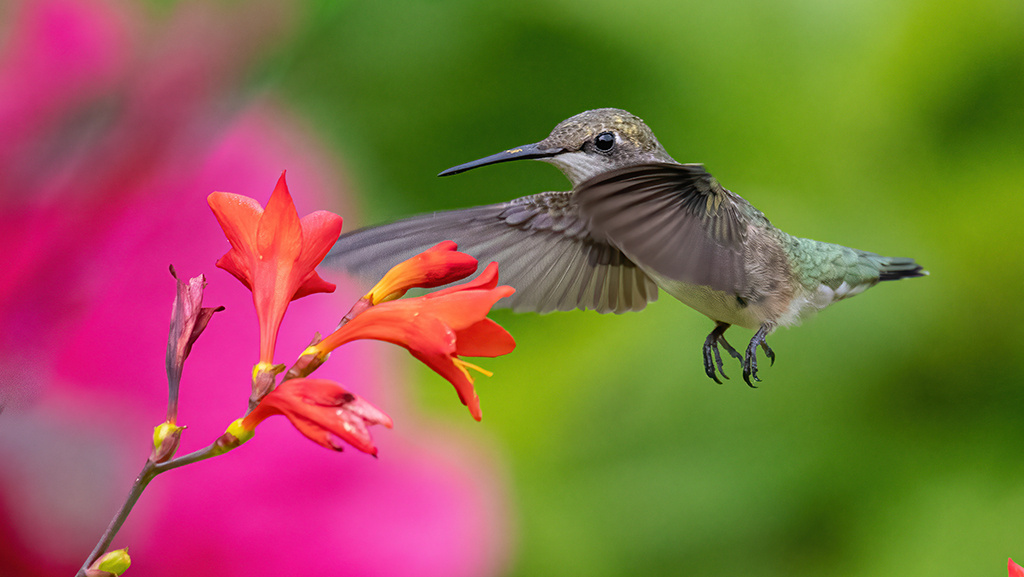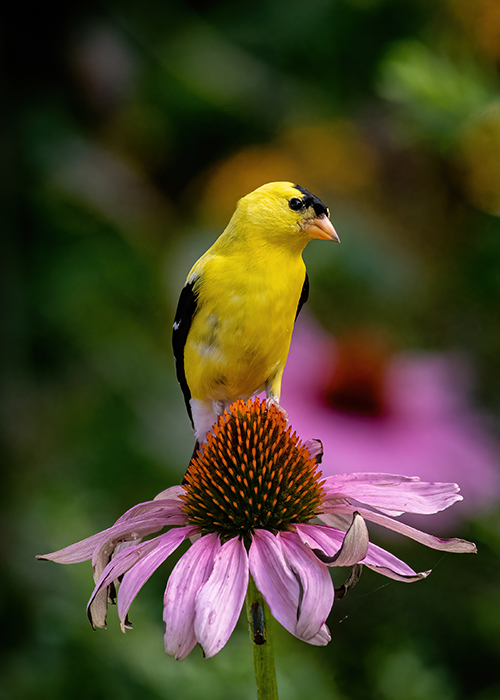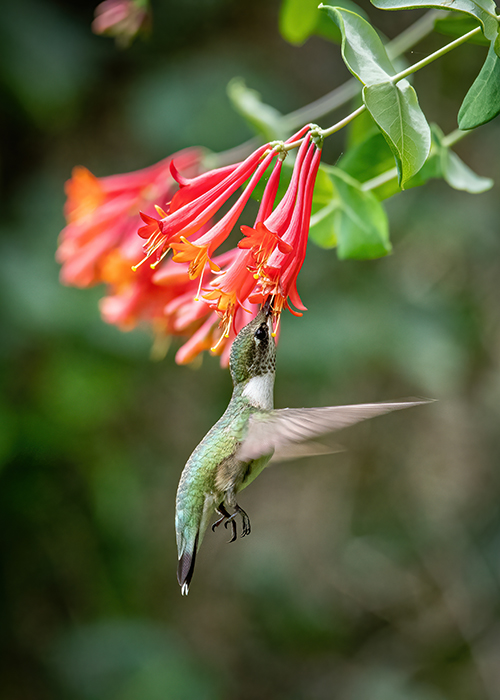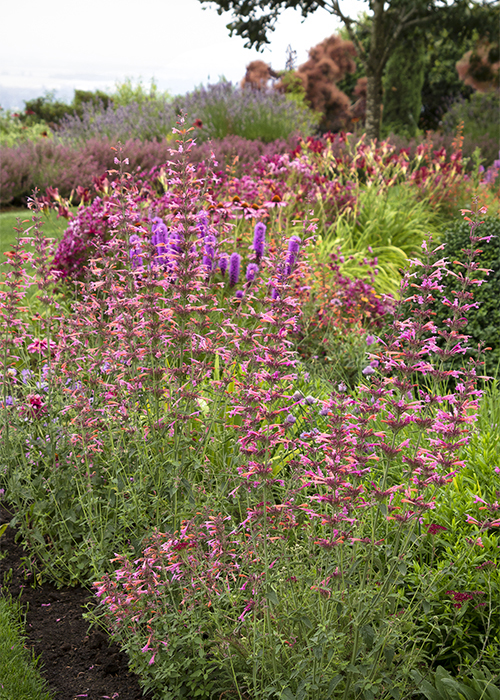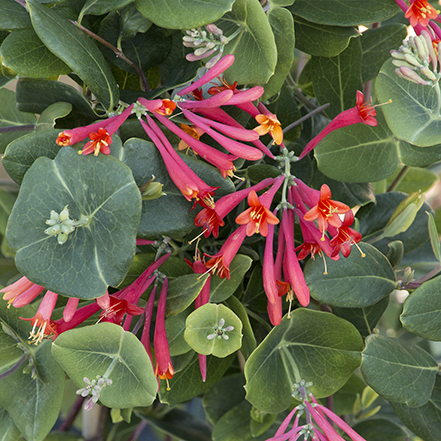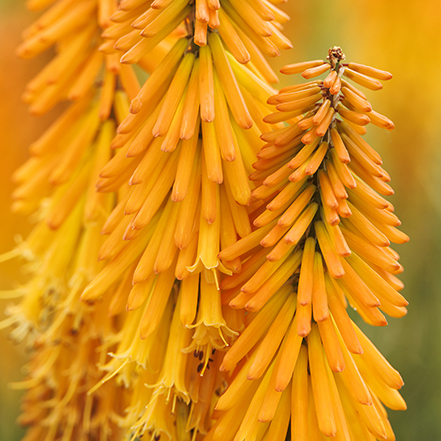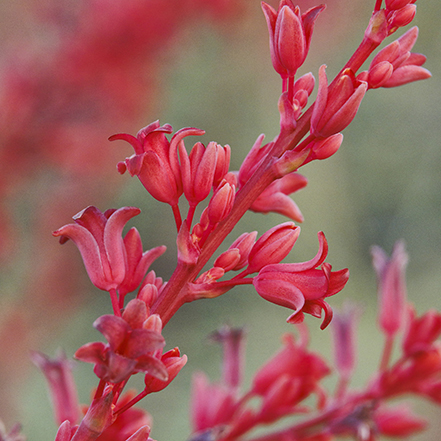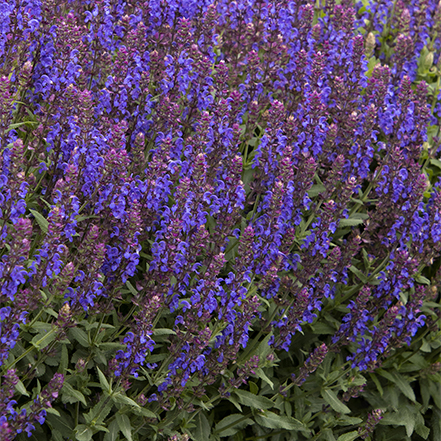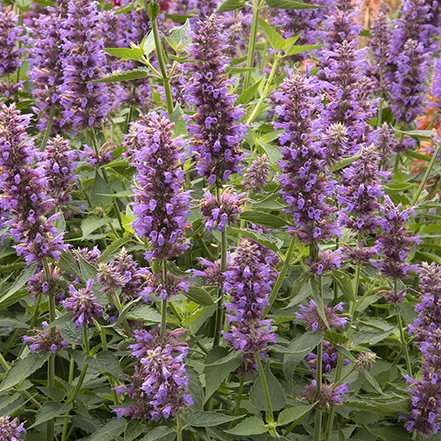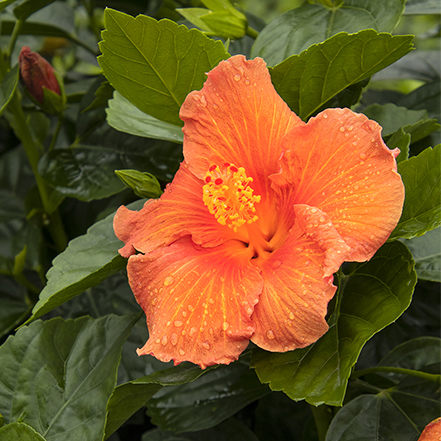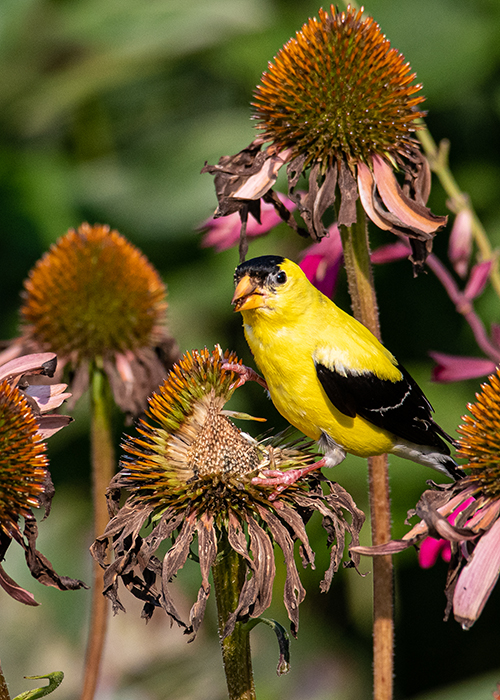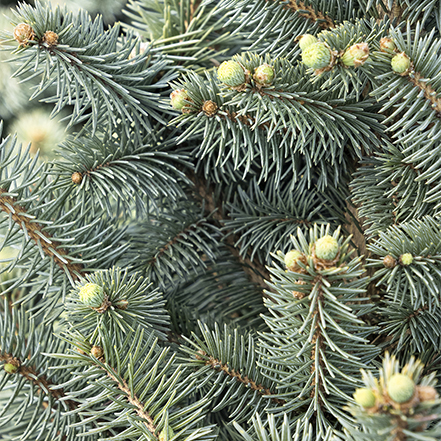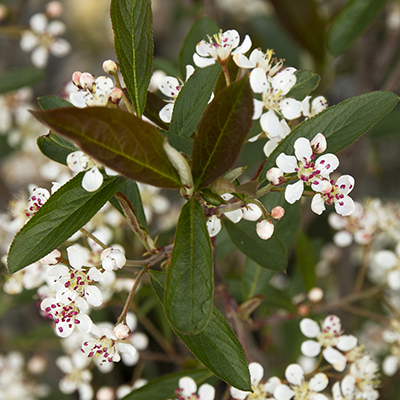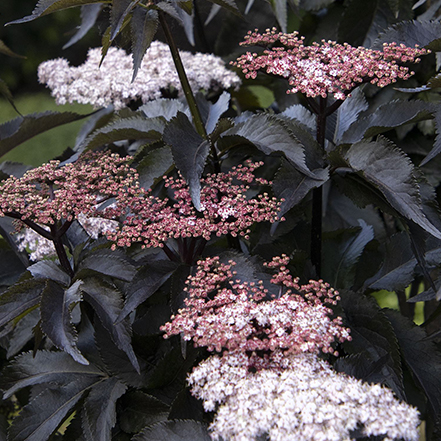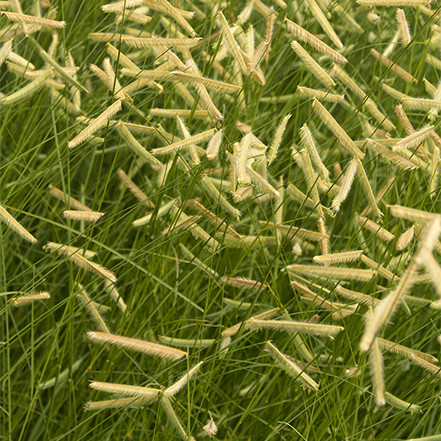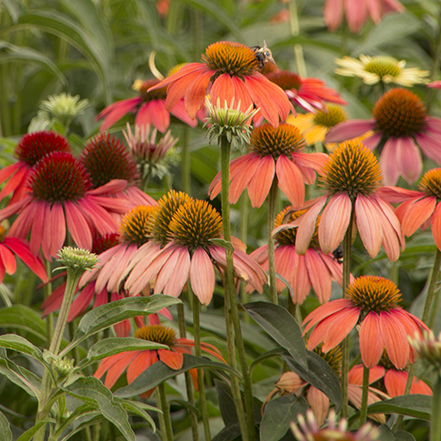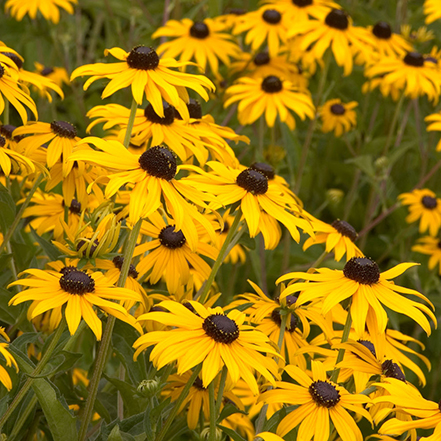It’s a fact of progress: Growing populations and expanding cities and towns mean fewer places of natural shelter and resources for birds and hummingbirds. A farmer’s pasture, an empty city lot, or the woods at the edge of town become homes, businesses, and streets. What’s not inevitable, though, is that these winged creatures will be completely abandoned. Providing food and shelter for our feathered friends is within all of our capabilities through the act of gardening.
Plants and flowers not only provide materials for nests and refuge, water and seeds for nutrition and habitat for their insect prey. They also enliven a backyard, a streetscape, or a patio with color, movement, and a diversity of nature’s visitors.
Turn your corner of the world into an outpost of nature’s abundance by purposefully creating a habitat with benefits for wildlife. Once you understand their habitat needs, select plants that serve as food and shelter resources, and design the space to suit both human and feathered creatures, birds and hummingbirds will flock to your avian oasis.
But why stop at birds and hummingbirds alone? Try your hand at creating gardens for wildlife and pollinators of all types. Our “Backyard Habitat Guide” takes you through landscape design suggestions for birds, hummingbirds, bees, and butterflies. Find all of our resources on pollinators and pollinator gardening HERE.
Tips for Gardening for Hummingbirds
Hummingbird Habitat Needs
To some, hummingbirds are like garden fairies, magical creatures that bless one’s garden with their flittering presence. Their fast-paced flight and iridescent green and blue feathers prompt a “Wait, is that ..?” leaving you to wonder if you truly saw anything fly by. Their arrival in spring and departure in fall are as sudden as their brief visits to a feeder or to flowers. Sure ways to encourage hummingbirds to linger longer are to provide the elements they require for feeding and nesting.
Nectar-producing flowers are most closely associated with attracting hummingbirds. But did you know hummingbirds are insectivores, too? According to The Nature Conservancy’s Deborah Barber, small insects are a lesser known but essential element of their diet.
And here’s another fact: “Encouraging insects in your yard means you’ll have spiders—and hummingbirds make their beautiful tiny nests from spider silk!”
Insect-friendly gardening is hummingbird and bird-friendly gardening. Maintain the landscape a bit messier, plant a healthy balance of natives, long-blooming cultivars, and wildflowers, and let some garden spaces go wild to encourage insects to stay for a while. Keep your landscape pesticide-free to encourage insect populations and to keep hummingbirds healthy.
Hummingbird Garden Design Tips and Ideas
When we think of hummingbirds, we think of their constant motion and quick floral sips. Here are a few tips for creating a garden that can sustain their active lifestyle:
- Incorporate plants with nectar-containing tubular flowers into your garden. The shape of hummingbirds’ bill are perfectly suited to slip into these slender openings to the nectar below.
- Choose plants with brightly colored flowers. Hummingbirds are attracted to flowers with intensely bright hues of orange, red, yellow, pink, and purple.
- And plant lots of them! The mass of color attracts the hummingbirds, and the abundance of nectar keeps them coming back to fuel their incredibly high metabolism.
- Include plants with long-lived flowers and with long blooming periods. You an also choose a variety of plants with shorter bloom times but with overlapping bloom windows. This will provide hummingbirds with a continuous source of nutrition during the hummingbirds’ active span of April through September.
Best Plants for Attracting Humminbirds
For more ideas of perennials preferred by hummingbirds, check out our “30 Beautiful Plants that Attract Hummingbirds” resource page. You’ll find plants suited for just about any area where these flitting flyers can be found.
Major Wheeler
Coral Honeysuckle
Talk about tubular! The long throats of these red and gold flowers bloom all summer and straight through fall, and help keep hummingbirds active. This vining deciduous plant is fast growing, so use it to cover fences, arbors and trellises up to 10 ft. tall. A non-invasive selection of a North American native. Partial to full sun. Zones 4-8.
Mango Popsicle
Dwarf Poker
Hummingbirds flock to this mango-orange Kniphofia. Blooming all season long, its tubular flowers are sure to keep hovering visitors sated. You’ll love it for its tidy habit, outstanding texture, and drought tolerance. It’s even evergreen in regions with mild winters. Flower stalks grow to 30 in. tall. Full sun. Zones 6-9.
Brakelights®
Red Yucca
This flaming-red yucca will certainly make hummingbirds take a detour once they spot this in your landscape. This newer compact selection of a classic red yucca rarely sets seed pods, which means more flowers and a longer flowering period—ideal for hummingbird feeding! Use en masse in landscapes for the birds and as a specimen plant in container for yourself. Flowering stalks grow 2-3' tall. Full sun. Zones 5-10.
Apex™ Blue
Meadow Sage
Salvias of all sorts are beloved by pollinators, hummingbirds among them. This selection is compact yet tall, giving hummingbirds plentiful flowers to sip from. These intense blue-violet flowers are held above fragrant green foliage. Something for everyone! Grows to 18" tall and wide. Full sun. Zones 4-9.
Blue Boa
Agastache
Another perennial for just about every pollinator, Blue Boa Agastache is particularly attractive to hummingbirds and butterflies. And its extreme showiness and low maintenance are a bonus for humans. Scented foliage and drought tolerance are the cherries on top. Grows to 32" when flowers are in bloom, which is late spring to early fall. Full sun. Zones 5-9.
Jazzy Jewel®
Amber Hibiscus
Prolific numbers large, long-lasting soft-orange flowers give hummingbirds plenty of nectar to sip on. All the Jazzy Jewel colors are great selections for adding a touch of the exotic to tropical landscapes, or use in patio or courtyard containers as a specimen plant. Grows to 4-5' tall and wide. Full sun. Zones 9-11, but use as an annual anywhere else!
Tips for Gardening for Birds
Bird Habitat Needs
Birds are a varied bunch. Some nest in hollow trees, some make nests on branches or in high grass, some eat only what’s on the ground while others grip onto a tree’s bark and peck at what crawls underneath. Each has its preference for food, shelter, migration, and birdsong, and that’s why they are such a delightful group to observe. Those reasons are also why we can’t just fill a feeder and call it a day.
A general rule of thumb for a bird-friendly gardening is to keep the space a little less perfect. “Gardening is most beneficial for wildlife when it’s a bit messier than most of us are used to,” says The Garden Conservancy’s Deborah Barber. She advises to leave fallen leaves, branches and old stems to provide nutrition and habitat.
These messier spaces encourage a wealth of nesting insects. An insect-friendly garden is a bird-friendly garden. To keep your landscape sufficiently stocked with a diversity of insects, plant an equally diverse mix of native plants and cultivars, and allow some spaces to remain “wild.”
Most importantly, leave your landscape untouched by pesticides for the sake of your visiting wildlife and resident pets. Will your garden suffer a bit of insect injury? Likely, but overlook these momentary imperfections in order to benefit your visiting birds.
Bird-Friendly Design Tips and Ideas
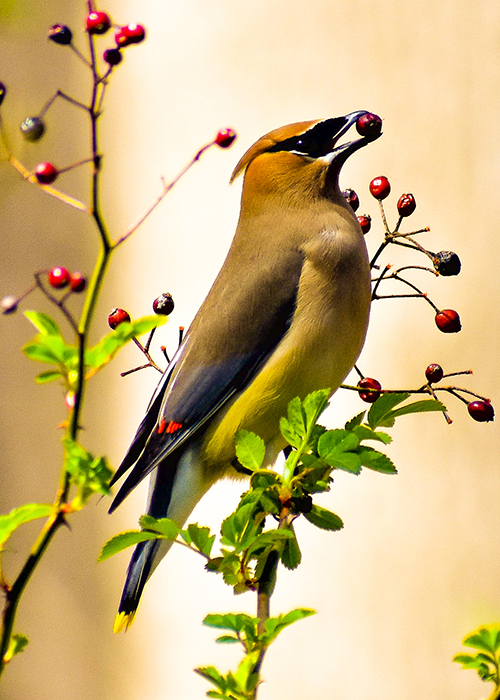
In addition to creating an insect-friendly garden, the following suggestions will help you create a bird-friendly space:
- Include some seasonal and structural diversity with evergreens for year-round shelter, and various sizes of plants and shrubs for use as nesting material and food sources for both birds and insects.
- Delay the deadheading. Let flowers go to seed, and keep seedheads standing to provide nutrition through the winter months.
- Plant a berry garden to feed birds in winter. Berries contain sugars, fats, and calories to fuel them through freezing winter nights. Learn more here: Plant a Berry Garden for Winter Birds.
- Provide water in birdbaths and other off-the-ground vessels, cleaning and refilling regularly.
Great Plants for Bird-Friendly Gardens
JeanGenie™ Colorado
Blue Spruce
JeanGenie™ is a classic-looking blue spruce on a slower-growing form and with a denser habit. Reaching just 15' tall, it’s perfect for smaller gardens and provides excellent year-round shelter for birds. Partial to full sun. Zones 2-8.
Brilliant Red
Chokeberry
This compact selection is an easy-care, multi-stemmed shrub that grows well in borders, woodlands and naturalized areas. Springtime’s white flowers are followed by lots of glossy red tart and bitter fruits that are loved by birds. Chokeberry puts on a brilliant red fall foliage show, too. Grows to 6-8 ft. tall and wide. Use in partial to full sun in USDA Zones 4-9.
Black Tower
Elderberry
Another shrub that is a beauty to behold, this elderberry has dark burgundy foliage on a very upright from. Pretty pink spring flowers result in blackish red berries beloved by birds. Grows up to 8 ft. tall and 4 ft. wide. Use in partial to full sun in USDA Zones 4-8.
Blond Ambition
Blue Grama Grass
This rugged, cold hardy, native grass features blue-green foliage and striking, flag-like, golden summer flowers on stiff, weather resistant stems. In the off-season, it beautifies an otherwise dull landscape with its long-lasting blonde seed heads, an excellent food source for foraging birds through winter. Grows to 3 ft. tall and wide. Use in partial to full sun in USDA Zones 4-9.
Cheyenne Spirit
Echinacea
This perennial is stunning with its vivid and vibrant shades of oranges, scarlets, reds, purples, golden yellows and creams. Each flowerhead is unique and blooms exceptionally on vigorous plants. Echinacea seeds are loved by goldfinches and other birds in the fall. Grows up to 30-in. fall and 24-in. wide. Use in full sun in USDA Zones 4-10.
Goldsturm
Black-Eyed Susan
The classic Black-Eyed Susan is a beacon of beauty for the summer garden. Its bright, daisy-like golden yellow flowers with black centers are fuss free. Leave the dying flowers to produce seeds for foraging birds in fall and winter. Grows to 26-in. tall and 24-in. wide. Use in full sun in USDA Zones 3-9.
Learn More About Gardening For Birds, Hummingbirds, and Pollinators
- Find our award-winning Backyard Habitat Guide for free here, and sign up for our newsletter to get first access to upcoming digital guides.
- Take a look at the pollinator section of the blog for a variety of stories about pollinator-friendly gardening
- Plant a Berry Garden for Winter Birds
- Modern Meadow: A fresh take on pollinator garden design
- What to Plant to Attract Butterflies, Hummingbirds, and Bees
- Ask an Expert: Best Pollinator Plants for the Garden
- Beneficial Insects for a Healthy Garden: A Visual Guide
- Best Early-Spring Flowering Plants to Attract Pollinators
- 10 Early-Blooming, Cold-Hardy Plants for Pollinators
- Late Summer and Fall-Blooming Perennials
- Grow a Pollinator Border
- Sign up for our Grow Beautifully newsletter. You'll get more design inspiration, garden tips, how-tos, and first access to exclusive guides, webinars, and plants.





